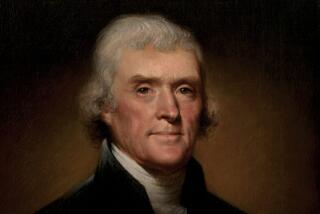COLUMN LEFT / ROBERT S. McINTYRE : Herschensohn Is Flat Wrong on Flat Tax : For 9 of 10 families, it would mean a tax hike--but for the very rich, a 40% cut.
- Share via
In December, 1981, Robert Hall and Alvin Rabushka of Stanford’s Hoover Institution proposed replacing the existing graduated personal income tax and the corporate income tax with a flat-rate 19% consumption tax.
Although the plan was rejected even by the Reagan Administration as hopelessly regressive, its authors continued to promote it, as they put it, “on radio talk shows, before professional and lay audiences, and testifying before Congress,” and eventually published two small books. Now the host of one of those talk shows, Bruce Herschensohn, running for U.S. Senate in California, has made the Hall-Rabushka flat tax the centerpiece of his campaign.
Herschensohn touts his flat-rate tax plan as fair because it would exempt from income tax the first $16,000 in wages for a family of four. What he doesn’t point out, however, is that the current personal income tax already exempts families of four on their first $18,800 in earnings. Moreover, until a family of four makes more than about $55,000 in total income, the current income tax rate is 15%--compared to 19% as proposed by Hall and Rabushka.
More fundamentally, replacing graduated tax rates that reach 31% on the best-off people with a flat-rate tax of 19% that is intended to exempt capital income from taxation must inevitably mean much higher taxes on middle-income families to make up the shortfall.
In fact, Hall and Rabushka calculate that their plan would raise taxes on 9 out of 10 families--including close to a 50% income tax hike on those in the middle of the income scale. But for the very rich they project a 40% tax cut.
Hall and Rabushka--and apparently candidate Herschensohn--are sanguine about such a dramatic shift in the tax burden because they believe that low taxes on the affluent are the key to economic progress and that their plan makes up in “simplicity” what it may lack in fairness.
But following the supply-side tax cuts of 1978 and 1981, unemployment rose, business investment and savings lagged, and while the very rich prospered mightily, incomes stagnated for the middle class and fell for the poor.
To make his plan appear simple, Herschensohn would have individuals file tax returns based solely on their wages (including pensions). Dividends and capital gains would be completely tax-exempt--a huge boon to the very wealthy. But taxes on many other types of personal income--interest, rents, self-employment profits and so forth--would still theoretically be due. And unlike current law, employer-paid health insurance and other fringe benefits also would be made taxable.
Rather than being remitted on personal tax returns, however, the 19% tax on taxable non-wage items ostensibly would be withheld by businesses and employers.
The proposed “postcard” form for wages is almost identical to the current IRS form 1040EZ, except that its type is smaller. The Herschensohn plan also would remove a few lines from the tax form by repealing all itemized deductions, primarily for mortgage interest, state and local taxes, and charitable contributions.
The real complexity of current law involves business taxation, mainly because business taxpayers have more opportunities to understate receipts and overstate deductions. But Herschensohn’s supposedly “simple” business tax form is a fraud.
For example, line one of the business postcard, labeled “Gross Revenues from Sales,” also includes rents, royalties, payments received for services, proceeds from the sale of business assets, the market value of exports, whether sold or not, the value of “free” bank services, etc.
Similarly, the next line of the form, “Allowable Costs,” is a cryptic reference to a long list of permissible write-offs.
In other words, the “simple” Herschensohn tax form offers businesses almost no guidance on how to fill out their returns. And by providing the IRS with virtually none of the information needed to select returns for examination, it would turn tax audits into a lottery.
Herschensohn’s pretense of shifting the tax burden more toward “business income” is equally fraudulent. His plan is really a disguised tax on personal consumption. And by vastly expanding business loopholes (for instance, giving a full, immediate write-off for investments, including land), it would create almost limitless tax-shelter opportunities for the well-heeled and well-counseled.
The bottom line on the Herschensohn plan is the only really simple thing about it. Average families would pay much higher taxes, the rich would get enormous tax cuts and the tax-shelter business would again thrive. If Herschensohn understands these facts, he should say so. Otherwise, he should rethink his position.
More to Read
Get the L.A. Times Politics newsletter
Deeply reported insights into legislation, politics and policy from Sacramento, Washington and beyond. In your inbox twice per week.
You may occasionally receive promotional content from the Los Angeles Times.










